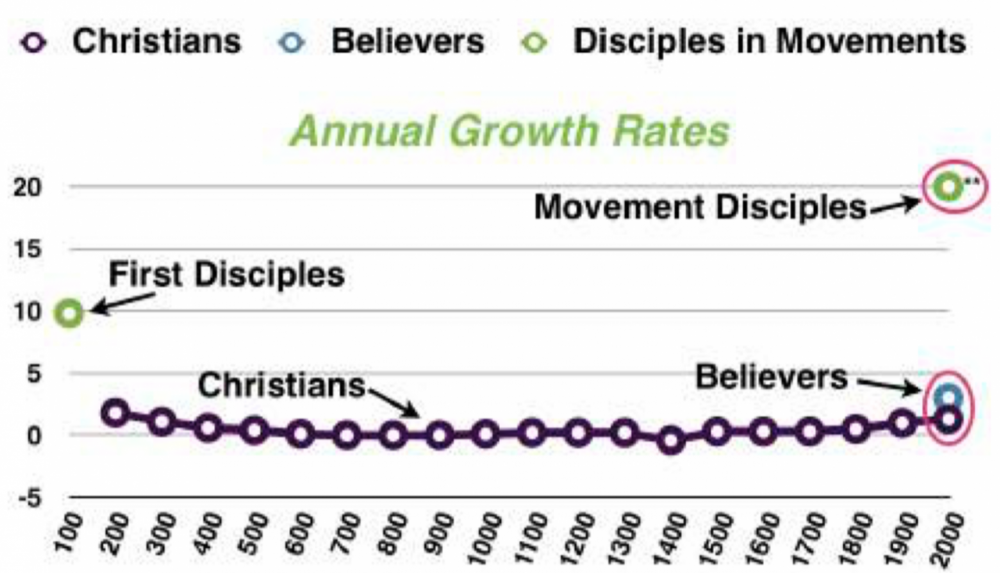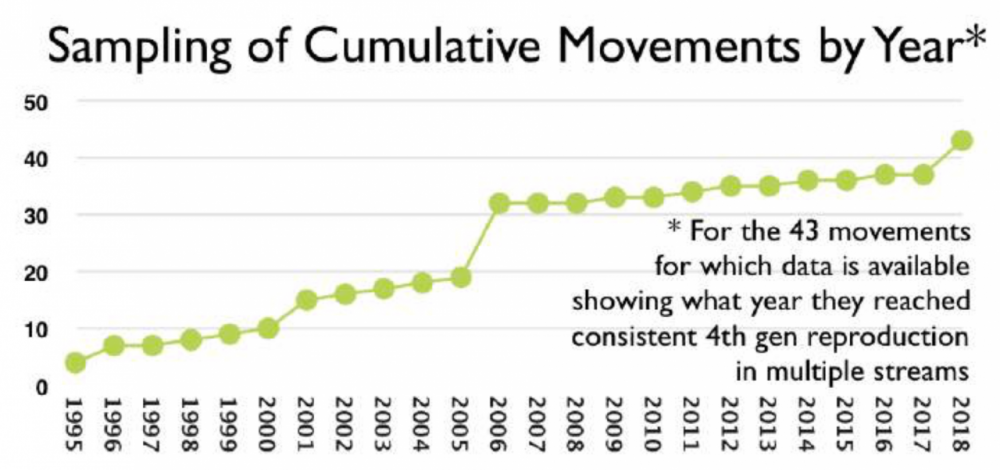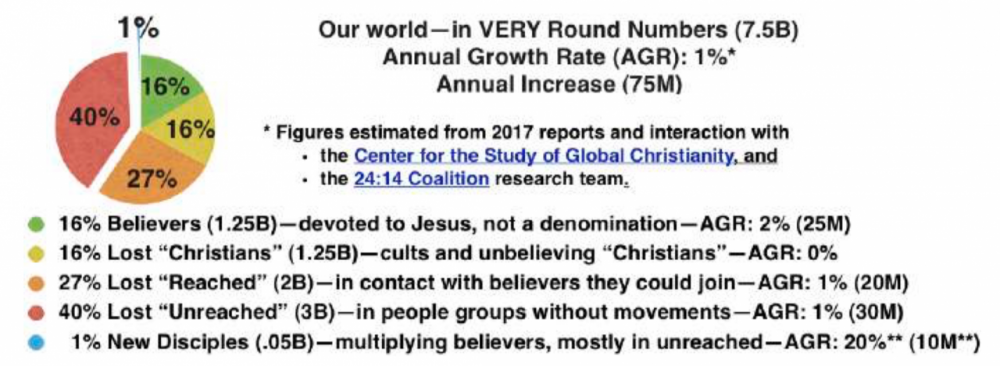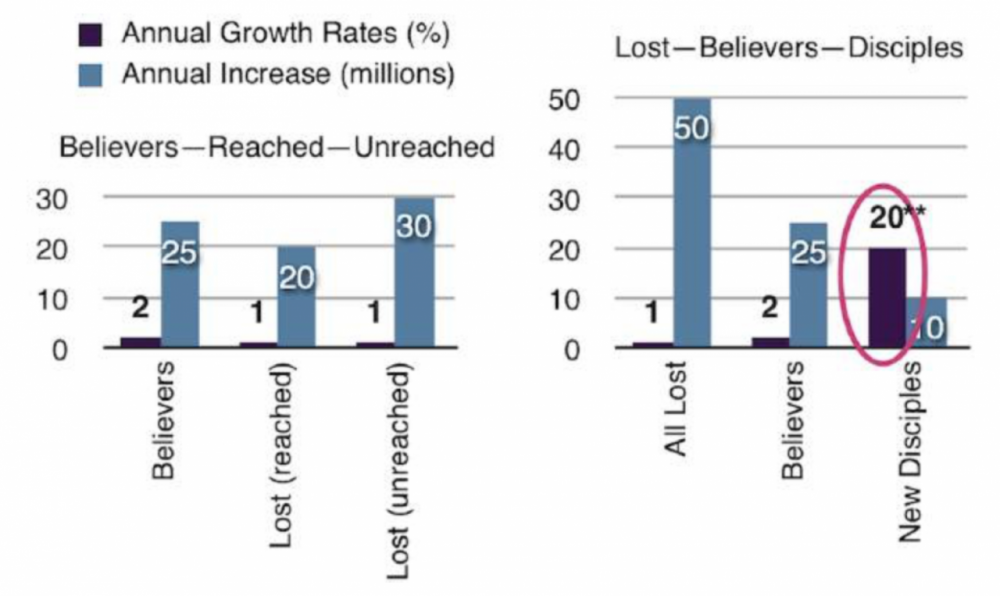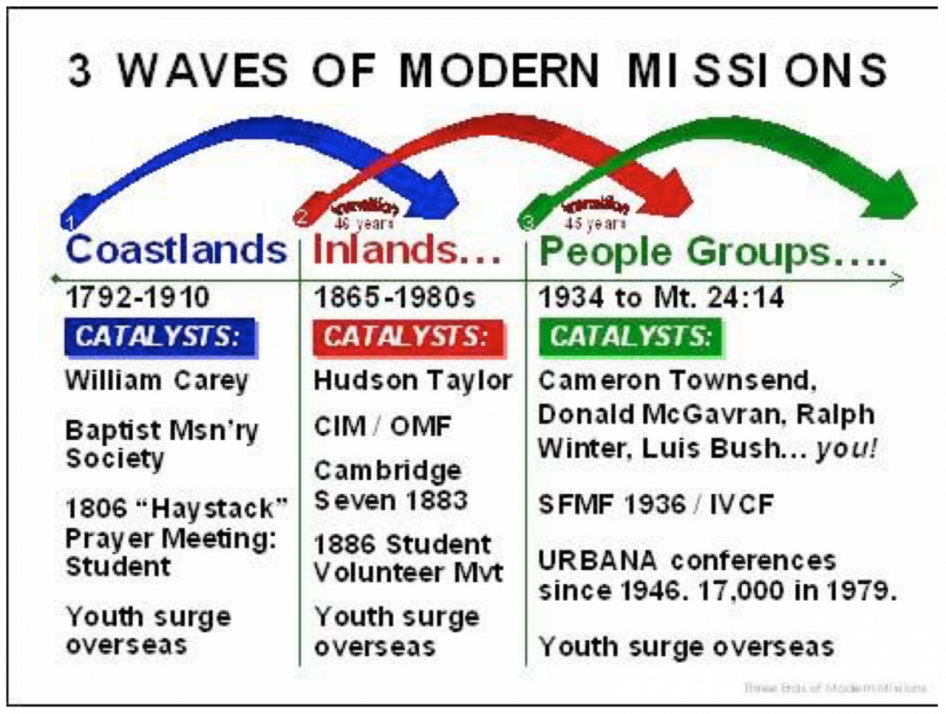• Disciple more by God-led discovery study than experts teaching.
• Cultivate maturity more through loving obedience than knowledge.
• Meet in private homes and public venues more than owned buildings.
• Average fewer than 20 participants in regular, interactive gatherings.
• Aim to multiply new ekklesia rather than grow in size.
• Employ simple patterns each disciple can facilitate and replicate.
• Involve disciples more in ministering than in receiving ministry.
• Work toward multiple new generations (not just daughter churches).
• Spread more through relational networks than attracting strangers.
• Prove more stable than churches of gathered strangers.
• Are invisible at first to outsiders and the surrounding community.
Historical perspective
Most believers since the firrst century have had no option but to live provincial lives—without the opportunity to see the unfolding progression of God’s global purpose or grasp our place in it. We have the unprecedented ability to view recent developments with the historical perspective to anticipate what lies ahead.
Christ’s ekklesia was birthed in a prayer meeting—Pentecost. From that event His global ekklesia experienced double-digit annual growth (10%+) only once—from 33–50 AD.12 In that rapid growth, Christ’s ekklesia had no written scriptures or buildings. Instead they had just:
• Jesus’ ministry, training model and global commission
• daily prayer and fellowship with one another
• the empowering of the Holy Spirit
• their testimony of Jesus’ life and work in their lives
Yet by 400 AD the church was centered in dedicated buildings and the annual growth of Christians had slowed to less than half a percent (.5%), where it stayed until the 1800s.
Even two hundred years after Martin Luther launched the Reformation, the growth of global Christianity remained below 0.5%. Then, in 1727, a band of 300 squabbling religious refugees from Moravia sought the Lord and experienced revival. Forty-eight men and women began a 100-year long, 24/7 prayer meeting and sent the rst hundreds of Protestant missionaries.13
In 1738, John Wesley was transformed through contact with Moravian missionaries, and the resulting Methodist movement transformed both England and the United States.14
By 1792, access to scattered reports of the religious state of the world stirred William Carey to write a short booklet—An Enquiry into the Obligations of Christians, to use Means for the Conversion of the Heathens,15 then set sail for India. Carey’s booklet and example stirred a first wave of missionaries to the world’s coastlands, causing him to be credited as the father of modern missions.
Carey’s Enquiry lifted many from a provincial perspective into awareness of God’s global purpose:
• Scriptural mandate
• Historical precedent
• Current realities
• Future prospects
In the late 1800s, Hudson Taylor issued a challenge to the interior of China with an effect similar to Carey’s Enquiry. This stirred a second wave of missionaries to the interiors of the world’s continents and fueled the student volunteer movement of the late 1800s and early 1900s. Wesley, Carey and Taylor all contributed greatly to this increase of Christians, from less than a fourth of the world in 1800 to a full third of the world by 1900, and set the stage for the globalization of the Church.
Ralph Winter estimated that, in 1900, 7.5% of Christians 16 were true believers. Between 1900 and 2000 the Evangelical, Charismatic and Pentecostal movements renewed the faith of many, so that by 2000 about a third of the world’s Christians 17 were committed believers.18
Distilling field workers’ insights
In the 1960s, Donald McGavran launched a graduate school at Fuller theological Seminary for experienced missionaries to study together how God had worked in their respective fields. 19 is collaborative learning environment yielded many important insights.
In 1974, Ralph Winter drew on these insights to distinguish two different contexts in which non-Christians are found:
• Reached People groups (15%) accept believers as part of their people.
• UPGs (85%) need a movement before believers will be accepted.
Winter and McGavran urged the launching of movements as God’s means for reaching UPGs, but the problem (peoples isolated from the gospel) was understood and embraced far more widely and rapidly than the solution (launching movements).
Thus, McGavran lamented in 1981 that 90% of missionaries among UPGs were not pursuing movements. 20 A student of McGavran’s told me he later regretted advocating church growth rather than church multiplication.

